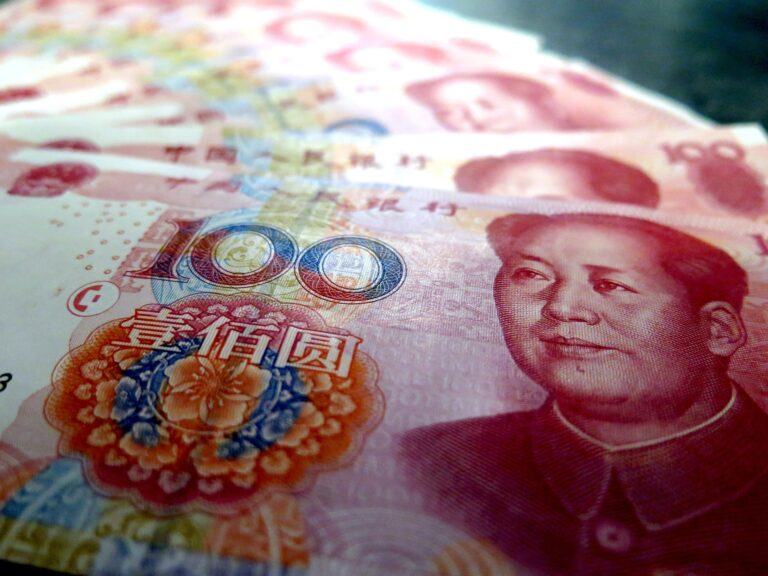Cryptocurrency Regulation in China
A third of the world’s biggest crypto exchanges are based in China and they have accounted for the lion’s share of Bitcoin transactions in the first half of 2019. Due to regulations introduced in the last year, Bitcoin is teetering on the edge of getting banned and the Celestial Empire is no longer the king of the crypto jungle. This is how events escalated.
In 2013, China started constructing a regulatory framework for cryptocurrency. The People’s Bank of China published a document called “Joint Notice on the Risks Associated with Bitcoin” and thereby prohibited all operations connected with cryptocurrencies for Chinese banks. Over time, the Chinese government also ordered payment companies like AliPay to stop processing Bitcoin exchange-related transactions.
Later in 2017, they published the 2017 PBOC Circular where they defined ICOs as illegal financing activities. Of course, this raised a lot of concern among crypto enterprises, resulting in some cryptocurrency exchanges shutting down operations on Chinese territory and changing their jurisdiction.
In 2019, President Xi Jinping declared Beijing’s support for blockchain technology which it values separately from digital currency. In the aftermath of Xi’s remarks China cracked down on crypto, trying to regulate – if not ban – cryptocurrency exchanges, BTC transactions and all things crypto in the country.
During the eighteenth collective study of the Political Bureau of the CPC Central Committee, Xi Jinping emphasized the use of blockchain as an important breakthrough in independent innovation of core technology, which had the effect of accelerating the development of blockchain technology, bathed as it now was in the sunlight reserved for that which the government finds acceptable.
Within a month, China has gone so bearish on crypto that the situation is starting to resemble the country’s 2017 trading ban.
Xi’s remarks have indeed had the effect of an “open sesame,” suddenly unlocking a blockchain treasure trove for China, which companies across the country have rushed towards to try and seize. An official bolstered the President’s sentiment, saying China has to gain an edge over other major countries.
“Blockchain’s future is here but we must remain rational,” warned the People’s Daily, the Chinese state paper. The current regulations in place for Chinese financial institutions, laid out by the central bank, could never be mistaken for tangible support structures for crypto, they are rather more like an attempt at a massive cleanup of the crypto sector.
Five Chinese crypto exchanges, like IDAX, currently don’t serve local users “due to policy reasons.” The harshness of these measures has resulted in Bitcoin falling to its lowest level in half a year at the end of its longest losing streak since at least 2010.
Soon we can expect Bitcoin miners to leave the country as well. This April, there were rumors about a possible ban on cryptocurrency mining in China. The National Development and Reform Commission passed a bill which defined mining as an “undesirable industry” and proposed banning it. According to the bill, cryptocurrency mining is an unsafe production connected with excessive use of resources which negatively affects the environment. The regulators haven’t made a clear decision yet, so mining is still in the grey area.
Despite the negative attitude towards Bitcoin and ban of ICOs, Chinese citizens still can hold and trade crypto between themselves. Additionally, China’s government is aiming to create their own national digital currency called the Digital Currency for Electronic Payment. It will be a centralized virtual currency issued by Commercial Banks and PBOC. The launch date is still unknown.
How the Chinese Use Cryptocurrency
Where People Buy and Trade Cryptocurrency
Though Bitcoin and cryptocurrencies are nominally banned it doesn’t stop the Chinese from buying, storing and trading crypto. The ban does not apply to private individuals, and so far people can own and send it to each other.
Despite the Great Chinese Firewall, which normally blocks access to such services, the Chinese actively use crypto exchanges thanks to Virtual Private Networks (VPNs). OTC platforms on OKEx, Huobi or Gate.io are among the most popular methods of crypto trading in the country.
To access IEOs and ICOs that block Chinese users, Chinese citizens buy KYC documents from citizens of other countries for $75 online. To trade and exchange BTC, USDT, ETH and CNYX (the Yuan stablecoin) for Yuan and get fiat money, the Chinese also use common payment services like Wechat Pay, AliPay and UnionPay card. But some of these are now distancing themselves from using crypto payments.
According to various estimates, the number of Chinese people that engaged in crypto in 2018 was about 3-7.5 million and by 2019 this figure is likely to only have increased.
Where the Chinese Store Crypto
According to the Business Growth Manager of imToken, most Chinese cryptocurrency enthusiasts store their crypto in mobile wallets, because there are more mobile phones than desktops, especially in rural areas. Also, they tend to keep their assets in centralized storage systems because they tend not to be confident enough in their own abilities to set up adequate storage of their own.
Regarding foreign wallets like Mycelim, Freewallet or Jaxx, they are less popular than their Chinese counterparts. It’s the same case with Visa and Mastercard compared with WeChat Pay and AliPay. But if China has already chosen to stop all crypto activities, the future of crypto storage, which has not been targeted yet by Chinese regulations, may still be seen in a brighter light.
The Biggest Bitcoin Whale in China
Fun fact about cryptocurrency storing habits in China. One unknown investor took the term HODL to heart and collected a huge amount of Bitcoin. The wallet address is 1KAt6STtisWMMVo5XGdos9P7DBNNsFfjx7, and currently, there are 93,947 BTC.
According to BABI Finance, the holder usually buys Bitcoin when the price falls. This wallet received the majority of its holdings through transfers from various accounts. About 20,000 BTC came from Huobi and HaoBTC, the Chinese cryptocurrency exchange. Another 67,000 Bitcoins were sent from an additional 14 accounts and the remaining 7,800 BTC are the result of small transfers from multiple accounts.
Cryptocurrency Business and Enterprises in China
The Mining Industry in China
Despite the ever-growing risks, most cryptocurrency mining is still concentrated in China. The largest ASIC equipment producer Bitmain is located in Beijing and mining farms have become a township forming enterprise. The chart below shows that Chinese mining pools such as BTC.com, F2Pool and Antpool are the largest market players in the industry:
According to Quartz, China holds ⅔ of all the hashrate on the Bitcoin network. This has at times led to fears that China has full control over Bitcoin.
The main reasons for Chinese mining dominance are low electricity costs and land renting in Xinjiang, Inner Mongolia, Yunnan and Sichuan. According to local mining farm operators, in the summer, the cost of a kilowatt of electricity in the southeastern provinces is $0.037. Thus, the daily profit of one mining device is anywhere from $1.00 to $3.38.
Cryptocurrency Exchanges
Up until the end of 2017, Chinese trading comprised the central engine of the global cryptocurrency market. It had the largest cryptocurrency exchanges with multi-million daily volumes. However, after the ICO ban, the situation has changed.
The platforms worried by such measures began to shut down their business operations in China and move their companies to other jurisdictions more favorable to the new industry.
Binance, the brainchild of Changpeng Zhao, was created by a Chinese team, although they have since formally relocated in Malta. Also, OKEx and Huobi are exchanges of Chinese origin, and they also have felt it necessary to “leave” China.
National Chinese cryptocurrency
After China banned crypto, the government decided to create its own cryptocurrency. However, it is more a digital version of the Yuan than a cryptocurrency in its own right.
By design, this digital currency should replace cash and other cryptocurrencies and strengthen the position of the Yuan in the global arena. Also, due to the widespread use of WeChat Pay and AliPay, the Chinese government is losing its control over cash-flow. Blockchain will help to restore this control by making all transactions in private payment systems traceable. Users and businesses will be able to download mobile wallets and exchange their money for digital currency, and then make payments with it.
The Chinese central bank will receive full control over all operations and will be basically the issuer of the coin. The national cryptocurrency has been under development for several years and is almost ready to be launched. However, the exact launch date hasn’t been revealed yet.
The Prospects of Cryptocurrency in China
As we know, things are very much still up in the air with cryptocurrency in China. One thing that analysts have keyed in on is that the China Electronic Information Industry Development, in conjunction with the Chinese Government, has been publishing a rating of public blockchains and cryptocurrencies each month.
They rate the projects according to three categories: technology, use-cases and innovation and sum them up with a single score. For instance, in July they put EOS, ETH and TRON in the first three places, while placing Bitcoin back in 11th place. However, the official Xinhua state media agency later claimed that Bitcoin has the characteristics of an ideal “safe haven” for investors.
As opposed to crypto, as in digital currency, blockchain technology has always been looked upon more favorably in China. In 2017, thanks to its impressive scientific potential, Chinese companies filed the most blockchain patents worldwide, increasing the number of Chinese blockchain patents by almost 4 times since 2016.
Also, Alibaba, the Chinese e-commerce giant, holds the majority of application-orientated Blockchain patents, used in areas such as healthcare, public welfare and logistics.
Meanwhile cryptocurrency businesses have had to adapt to new challenges. When people started talking about a possible ban on mining, Chinese miners began to look closely at other jurisdictions with relatively inexpensive electricity and a not-too-hot climate, including Iceland, Canada and the United States.
Some well-known market players began to resort to business diversification. For example, the largest manufacturer of mining equipment, Bitmain, has begun exploring the development of artificial intelligence as an alternative source of revenue.
Despite China constituting a big share of the global cryptocurrency industry, the government has still moved forward with restricting it. Even though the biggest exchanges in the world were created by Chinese teams, legally they are located in other countries.
The possible ban on mining is threatening to produce a similar effect. As a result, China is losing some of its sheen as a cryptocurrency country in the global market. On the other hand, the regulations also have had a bright side.
Unfortunately, scammers and bad actors have set up camp in the crypto space. The strict regulations in China, even though the may be stunting growth, are also have the effect of purging the industry — at least in China — of snake oil salesmen.
Yes, China has a complicated relationship with cryptocurrency at the state level, however, its enthusiasm for blockchain technology is still remarkable. It is safe to say that people can expect a number of breakthroughs in blockchain technology from China, be they tied to big data, the Internet of things or even the future of cryptocurrencies.
Featured image via Pixabay.
Written by: Solomon Brown, head of PR at Freewallet
Solomon has a wide background in crypto and blockchain technologies. After promoting several blockchain startups, Solomon started his tenure with Freewallet in 2018, firstly as a PR manager, before moving to his current position as head of the PR department.











